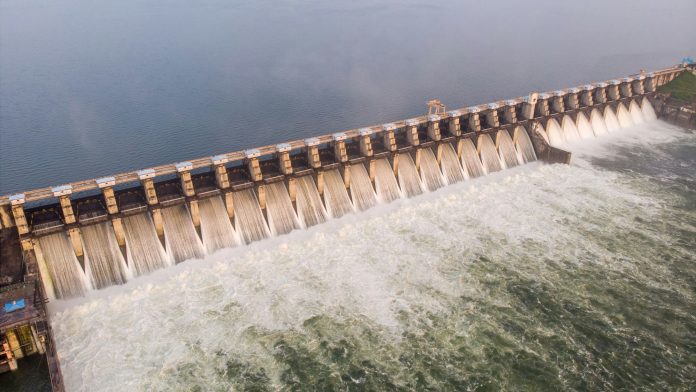Electricity generation from hydropower in the United States is set to plummet in 2024, presenting both challenges and opportunities for small business owners across various sectors. The latest Short-Term Energy Outlook (STEO) from the U.S. Energy Information Administration (EIA) predicts a staggering 13% drop in hydropower generation, marking the lowest levels since 2001. With the Pacific Northwest, a vital hub for hydropower production, experiencing severe drought conditions, the implications are significant for businesses relying on stable energy sources.
Key Takeaways:
- Hydropower generation in 2024 is projected to be 13% lower than the 10-year average.
- The Pacific Northwest is heavily affected, with extensive drought conditions hampering water supply.
- Businesses may face challenges related to energy costs and availability, alongside potential opportunities in renewable energy innovations.
The dire forecast stems from alarming drought statistics, with approximately 87.2% of the continental U.S. experiencing dryer-than-normal conditions as of October. This is critical because the Pacific Northwest, specifically the Columbia River Basin—which spans parts of Washington, Oregon, Idaho, and Montana—accounts for much of the nation’s hydropower capacity. The Columbia River Basin is home to monumental facilities like the Grand Coulee and Chief Joseph dams, vital for electricity generation and local economies.
“The Dalles Dam, which serves as a bellwether for water supply in the region, recently reported water levels at only 74% of the historical norm,” notes the EIA. This water deficit emerges alongside a broader drought emergency declared by Washington State, where numerous counties face water supply challenges that threaten not only hydropower but also agricultural and small business operations that depend on consistent water access.
For small businesses operating in energy-dependent sectors—such as manufacturing, agriculture, and service industries—the impending energy crunch may bring higher electricity costs and variability in supply. The STEO anticipates Northwest hydropower generation will dip to 101.8 billion kilowatt-hours (kWh) in 2024, down from an average of 132.8 billion kWh over the past decade, exacerbating the stress on energy resources.
Practical Applications for Small Businesses:
Small business owners should take proactive steps in response to these changes. Here are several strategies to consider:
- Renewable Energy Integration: Businesses can explore solar or wind energy solutions to mitigate reliance on hydropower. Investing in renewable energy can stabilize energy costs and contribute to green energy goals.
- Energy Efficiency Measures: Implementing energy-saving practices, such as upgrading to energy-efficient appliances or optimizing operational hours to shift demand, can help shield businesses from fluctuating energy costs.
- Water Management Strategies: Companies in agriculture or those using significant water resources should develop conservation strategies to address both immediate drought impacts and long-term sustainability.
- Scenario Planning: Businesses should implement scenario planning to assess potential impacts from energy shortages, considering factors like production schedules, cost management, and flexibility in supply chains.
Despite the challenges, some businesses may identify opportunities amidst these shifting conditions. Companies specializing in energy technology, for example, could respond to the heightened demand for alternative energy solutions. The narrative of a cleaner, more resilient energy sector is continuing to gain traction, paving the way for innovative business models in energy efficiency and alternative sources.
Repercussions of the drought and subsequent decrease in hydropower generation reach beyond immediate economic factors; they touch on sustainability goals at local and national levels. “Our findings stress the importance of diversifying energy resources, given the clear volatility of hydropower amid climate conditions,” emphasizes the EIA in its report.
The situation is fluid, and small business owners would benefit from staying informed about updates from the EIA and other relevant energy authorities. Engaging with local chambers of commerce and industry associations may also provide insights into collaborative solutions and available resources to navigate these changes.
For more detailed information, access the original EIA report on this matter at EIA.gov.



